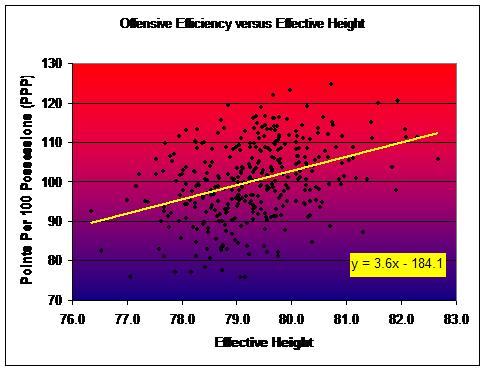Brackets, Braces & Parentheses – Part 1
Posted by rtmsf on December 23rd, 2009Because sometimes, playing with the numbers is more fun than watching the actual games. This is the first of a three-part series on height and college basketball.
“You can’t teach height.” – Frank Layden, Utah Jazz Basketball Coach
More so than in any other sport, height plays a huge role in determining a player’s fate on the court. My wife’s jaw drops when I tell her I’m the same height as Steve Nash. However, as a friend once told me, “being tall does not necessarily correlate with ability to play basketball.” For example, growing up in Charlottesville, the late nineties saw a man by the name of Chase Metheny suit up for the Cavaliers. Chase was an astonishing 7 feet 4 inches tall and he was… terrible. He just didn’t have the body coordination necessary to compete with other bigs in the conference and proving the point that being tall doesn’t mean you can dominate everyone.
So, then, what does it buy you? How does being taller help the average college basketball team?
Ken Pomeroy looked at this last year, but I’d like to take it a bit further. I’ve gone to kenpom.com (where else?) and downloaded the statistics for the effective height of each team. A team’s effective height is the sum of the height of each player on the team weighted by the percentage of minutes played (assuming the player has played at least 10% of the teams minutes). Thus, a team’s effective height can change depending on who they put on the floor. If Texas gives Dexter Pittman (6’10) more minutes relative to Dogus Balbay (6’1), they become a taller team in effective height terms.
I’ve separated the data out into offensive and defensive efficiency and plotted it versus effective height. (Note that redder is better.)










































